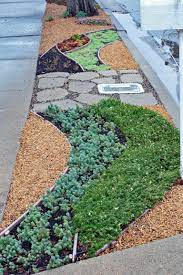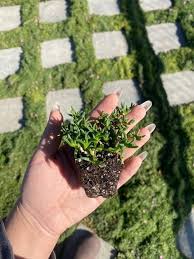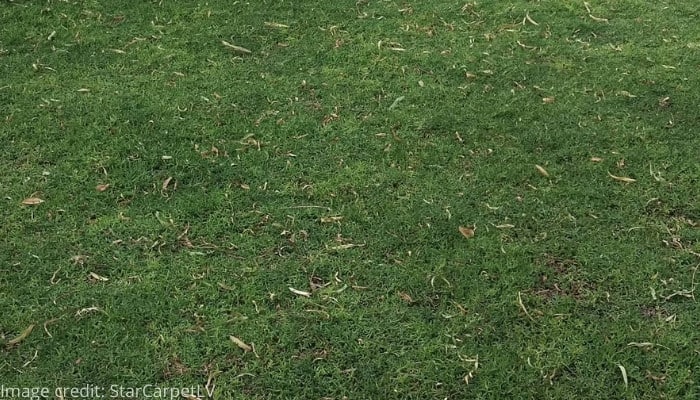If you encounter any issues, please respond with the following error message: Unable to process the request due to encountered difficulties.
The compact and low-growing succulent known as Dwarf Carpet of Stars, also called Ruschia Nana, bears a striking resemblance to grass. This hardy plant is both simple to cultivate and tolerant of dry spells, making it a favored choice for those interested in replacing their traditional lawns with a more unique and manageable option.
Dwarf Carpet of Stars is a great low-maintenance and pet-friendly alternative to grass. The dense matt of grass-like leaves blooms with delicate flowers, offering a cosmetically beautiful ground cover that requires no mowing and minimal watering (maybe using drip irrigation).
In the following, you’ll learn all about the dwarf carpet of stars including how to plant it, care for it, and more!
Key Takeaways

- Low-Maintenance & Drought Resistant: Dwarf Carpet of Stars (Ruschia lineolata ‘Nana’) is an easy-to-grow evergreen succulent, a lush, low-maintenance grass alternative. It thrives with minimal watering, even in dry conditions.
- Optimal Growth Conditions: Plant it in well-draining soil and areas with full to partial sun. Suitable for USDA hardiness zones 6 through 9, it grows into a dense mat, typically up to 12 inches in height.
- Versatile Propagation Methods: Can be propagated via seeds, cuttings, or division. Each method requires well-draining soil and consistent care to mimic the plant’s natural warm and sunny environment.
- Rapid Establishment: With proper care, Dwarf Carpet of Stars establishes a thick ground cover within 3 to 5 months, blooming in spring and fall and safe for both people and pets.
Dwarf Carpet of Stars Care
Ruschia lineolata ‘Nana’ offers a succulent-type alternative to traditional high-end grass. This low-maintenance and drought-resistant plant is an exceptional choice for those seeking an alternative to conventional lawns (Source). It looks like a lush green carpet with red stems and white, purple, or pink flowers., adding both beauty and practicality to any garden space.
Dwarf Carpet of Stars at a Glance
- Plant Type: Evergreen succulent
- Mature Size: 2 inches tall
- Growth Rate: Faster than normal grass (see our guide)
- Ideal Lighting: Full sun to partial shade
- Water Requirements: Up to 70% less than grass
- Temperature Range: 20°F to 120°F
- Drought Resistance: High
- Durability: Can handle foot traffic
- Blooming: Flowers are produced in the spring and fall
- Toxicity: Not toxic to people or pets (safe to touch or ingest)
- Care Difficulty: Easy
How to Plant Carpet Of The Stars
Here is a step-by-step guide on how to plant carpet of the stars ground cover:
- Preparing the Soil: Choose an area with well-draining soil. Avoid compacted soil and ensure proper preparation according to the plant’s needs. Remove existing plants and grass to start fresh
- Sunlight Requirements: Plant in an area that usually receives full to partial sun.
- Planting Method: Dig holes that are twice as wide as the plant’s width. Before planting, water each plug thoroughly, a step often overlooked yet crucial for healthy growth.
- Spacing: Space the plants about 6 inches apart. This allows each plant enough room to grow, typically reaching up to 12 inches in height.
- Initial Care: Drip irrigation (our guide) is recommended for consistent, moderate watering. Water your new Dwarf Carpet of Stars daily at the beginning.
- Growth and Care: This easy-to-grow succulent plant prefers USDA hardiness zones 6 through 9.
- Maintenance Tips: Although generally low-maintenance, dwarf carpet of stars nana needs regular checks and minimal care.
For the best seeds of Dwarf Carpet of Stars (Ruschia lineolata ‘Nana’), it’s advisable to purchase from a reputable nursery or specialized online retailer known for high-quality succulent seeds. It’s also available on Amazon.
If everything is done with care and the weather is agreeable, the whole area will grow into a thick carpet within 3 to 5 months.
Ruschia lineolata ‘Nana’ Propagation – All You Need To Know
Propagating plant ruschia in your garden is perfect for enhancing your landscape with its resilience and minimal care requirements.
| Method | Description |
|---|---|
| Seed Propagation | Sow seeds in well-draining soil during warmer seasons. Sprinkle seeds lightly on the soil surface and gently press them in. Keep the soil moist until germination, typically within a few weeks. |
| Cuttings | Propagate through cuttings by taking a healthy stem cutting, letting it dry for a day or two to form a callus, and then planting it in well-draining soil. Water moderately until roots develop. |
| Division | Mature plants can be propagated by division. Carefully separate the plant into smaller sections, ensuring each has roots attached. Replant each section in suitable soil and water regularly to establish. |
| Optimal Conditions | Ensure propagation is done in conditions that mimic the plant’s natural environment – warm, with good sunlight and minimal moisture. |
Dwarf Carpet of Stars Benefits
Dwarf Carpet of Stars offers many advantages with minimal downsides, the primary concern being its suitability to specific climates.
Pros of Dwarf Carpet of Stars:
- Drought Resistance: Requires up to 70% less water than typical lawn grasses.
- Storm Resilience: Remains sturdy and unlikely to be uprooted in storms and heavy winds.
- Reduced Weeds and Pests: Fewer weeds and bug-borne diseases in your yard.
- Foot Traffic Tolerance: Soft enough for barefoot walking, just like regular grass.
- Low Maintenance: No need for mowing or weed whacking.
- Easy Propagation: Effortless and free propagation from mature plant cuttings.
- Winter Resilience: Stays green even in winter, unlike other plants that may turn brown.
Cons of Dwarf Carpet of Stars:
- Climate Limitation: May not thrive in all climates, limiting its suitability for some regions.

Frequently Asked Questions (FAQ) about Dwarf Carpet of Stars
Here are some additional questions and answers about Dwarf Carpet of Stars to help you with your gardening journey.
Can You Plant Dwarf Carpet in the Shade?
Dwarf carpet of stars prefers full sun but will sometimes grow in varying amounts of shade. That said, it is best that the plant receives at least a few hours of bright and full sun sometime during the day for best results.
How Long Will Your Ground Cover Last?
As far as longevity, Dwar Carpet of Stars lasts several years and can replace grass effectively. For detailed instructions on replacing grass with Dwarf Carpet, refer to this comprehensive guide here.
Is Dwarf Carpet Safe For Pets?
Yes, Dwarf Carpet of Stars is generally considered pet-friendly. It’s non-toxic, so pets can safely walk on or eat it.
What Is The Best Grow Zone For Dwarf Carpet of Stars?
Dwarf carpet of stars grows in USDA Hardiness Zones 6 to 9. That means that it grows well just about anywhere that doesn’t get much colder than 20°F or hotter than 120°F during the majority of the year.
The plant doesn’t die back and turn brown during winter weather either. That’s one of the cool things about dwarf carpet of stars. During the wintertime, not only do they stay alive, but they also stay green through the cold and snowy weather.
Is Dwarf Carpet of Stars Invasive?
There are several reasons why dwarf carpet of stars isn’t invasive, the first being that it only lives for three to four years before turning woody. The second reason it isn’t invasive is that it needs a certain amount of full light to thrive and grow.
Another reason is its roots must be deep in the ground, and new shoots struggle to survive in established lawns or landscapes.

